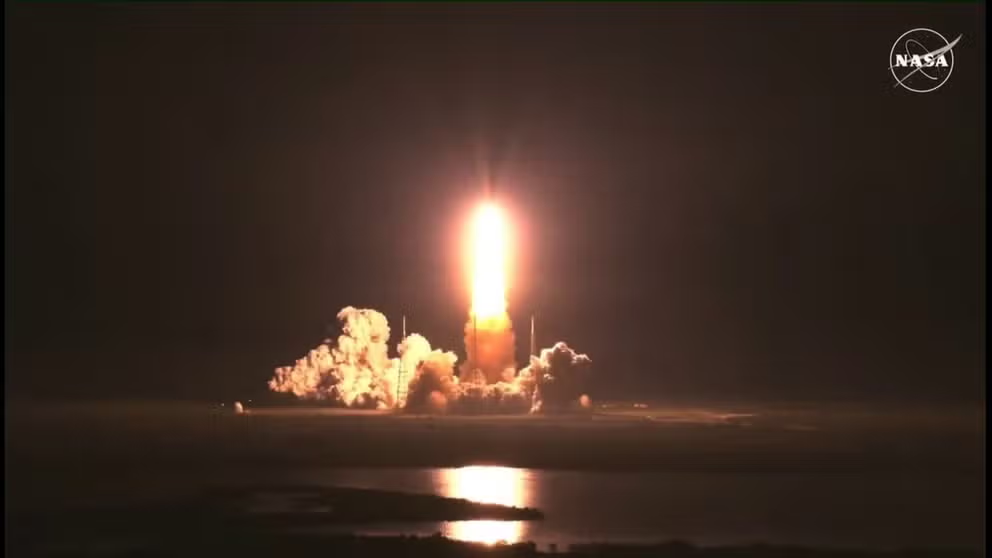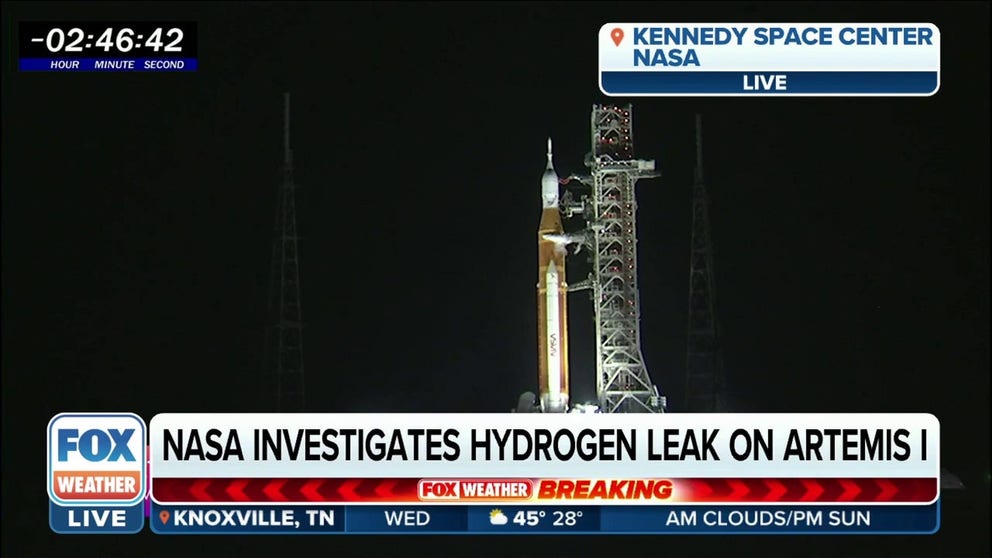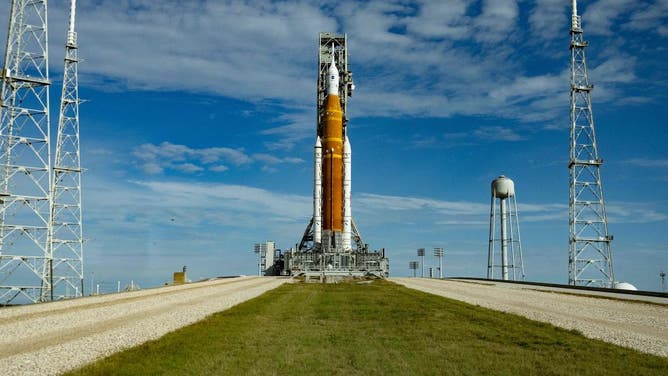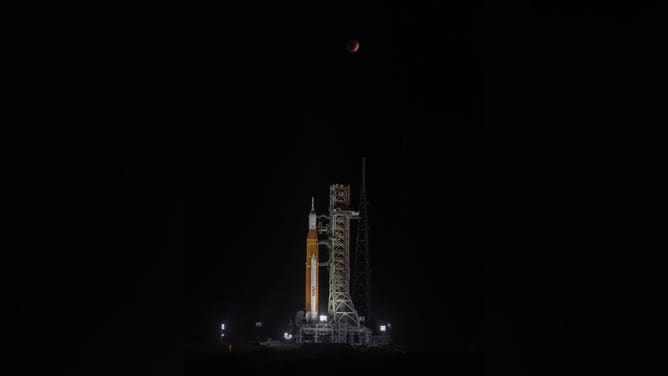History made: NASA's moon rocket roars to life launching on Artemis 1 test flight
At 1:47 a.m. Eastern, the SLS rumbled away from the Kennedy Space Center launchpad, beginning the Artemis 1 test flight. The Orion spacecraft will orbit the moon and spend 26 days in space.
History made: A look back at NASA's Artemis 1 journey to launch
Early Wednesday morning, the Artemis I moon rocket successfully launched from the Kennedy Space Center.
KENNEDY SPACE CENTER, Fla. – The Artemis I moon rocket successfully launched early Wednesday, starting the Orion spacecraft's journey to orbit the moon and marking a major step toward returning humans to the moon.
Before the historic launch could happen a specialized team in Florida entered the blast zone of NASA's mega moon rocket to repair a fuel leak amid the space agency's third attempt to send the Space Launch System rocket and Orion spacecraft on a test flight known as Artemis 1.
After several delays, including the repair at the pad, the SLS rocket roared to life, rumbling away from Kennedy Space Center launchpad 39B with 8.8 million pounds of thrust, beginning a 26-day test flight for the Orion spacecraft to the moon and back.
At 1:47 a.m. Eastern, the RS-25 rocket engines created a rumble so powerful it could be felt throughout Florida, and the light illuminated the Space Coast.
The Artemis 1 launch was more than a decade in the making that was at times an uphill battle for the space agency hoping to return astronauts to the moon using the rocket by 2025.
NASA's moon rocket roars to life launching on Artemis 1 test flight
After several delays, the Artemis 1 moon rocket successfully launched from the Kennedy Space Center early Wednesday morning.
"We are all part of something incredibly special, the first launch of Artemis, the first step in returning our country to the moon and onto Mars," Artemis 1 Launch Director Charlie Blackwell-Thompson told the launch team after liftoff. "What you've done will inspire the next generation."
The countdown got underway Tuesday, and fueling the 322-foot-tall rocket with more than 750,000 gallons of cryogenic fuel began Tuesday afternoon.
WHAT IS NASA'S ARTEMIS 1 MISSION GOING TO DO?
Early on, the countdown was going smoothly, but as the launch window approached, the first issues with the SLS began to arise.
NASA discovers hydrogen leak at base of Artemis 1 rocket
FOX Weather Space Specialist Emilee Speck says crews have access to the leaked area and are working quickly to troubleshoot.
The rocket must slowly be filled with liquid oxygen and liquid hydrogen propellant. Hydrogen, a tiny molecule, has created problems for NASA during the last launch attempts. To avoid leaks, Blackwell-Thompson said the team would take a "kinder, gentler" approach to tank the rocket.
Two previous launch attempts – one in late August and the other in September – ended in launch scrubs due to technical issues with fueling the rocket with super-cold liquid hydrogen, which commonly leaks.
Yet another liquid hydrogen leak was discovered around 9 p.m., which required a high-risk operation by Red Team technicians to head to the launch pad to physically repair the leaking valve.
Two technicians and a safety team member entered the blast zone for about an hour to tighten the bolts on the mobile launch tower. The Red Team's work prevailed, and NASA again began replenishing the liquid hydrogen fuel on the rocket.
"Thank you to the red crew for their hard work and bravery to work in this environment," NASA Associate Administrator for Exploration Systems Development Jim Free tweeted.
Around the same time, the space agency learned from the U.S. Space Force a radar asset required for liftoff was down. Less than two hours before the 1:04 a.m. launch window opened, the range was "NO GO" while the Space Force worked to remedy this issue involving a "bad Ethernet switch."
The Space Force replaced the switch, and as the launch window opened, NASA set a new liftoff time of 1:47 a.m.
During the countdown, managers took time to discuss a problem caused by Hurricane Nicole when the rocket was out on the launchpad during the storm.
Some room-temperature vulcanizing material (RTV) – or silicone caulking – came loose off the base of the Orion spacecraft during the storm. The RTV could not be repaired before the launch because it's impossible to access it while the 322-foot-tall rocket is on the launchpad.
NASA managers previously approved launching with the loose RTV, but the issue came up again during the countdown when a sensor detected more of the material was loose. Again after an extensive review, NASA management agreed to move forward with the countdown and that the material would not pose a risk to the SLS.
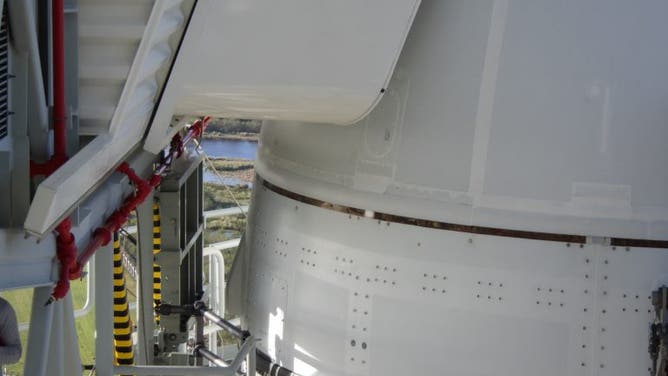
The area where caulk on a seam between the Orion launch abort system’s ogive and crew module adapter detached during Hurricane Nicole. (Image: NASA)
(NASA / NASA)
After two previous launch attempts and dealing with delays from hurricanes Ian and Nicole, NASA managers said they were confident that this time, everything would line up for the mega moon rocket designed to return humans to the moon by 2025.
"We're going to go when we're ready. We're learning the systems of this vehicle," Free told reporters earlier this week.
Orion begins journey to the moon
The SLS used more than 8.8 million pounds of thrust to begin Orion's journey around the moon.
Orion was in Earth orbit soon after launch and completed a trans-lunar injection burn, sending the spacecraft on the way to the moon.
NASA confirmed all four of Orion's solar arrays deployed and were producing power.
About 10 small spacecraft will be deployed in orbit as secondary payloads on the spaceflight to the moon. There are also manikins inside the spacecraft wearing special vests to examine the effects of radiation on future astronaut passengers.
MEET THE MANIKINS THAT WILL HITCH A RIDE ON NASA’S MOON ROCKET
Orion will travel about 40,000 miles beyond the moon's far side, farther than any human-rated spacecraft. This lunar orbit is known as the distance retrograde orbit or DRO.
The Artemis 1 test flight culminates with Orion's splashdown in the Pacific Ocean on Dec. 11.
Beautiful launch weather
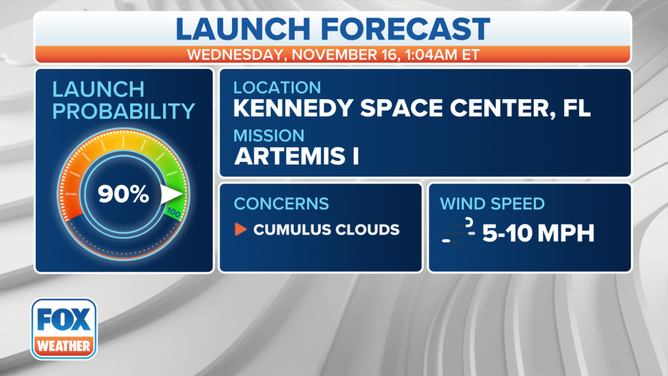
The Artemis 1 launch forecast for Nov. 16 at 1:04 a.m.
(FOX Weather)
The weather continued to be nearly perfect for a rocket launch that requires no rain, low wind speeds and specific temperatures.
Forecasters with the Space Force 45th Weather Squadron predicted a 90% chance of favorable launch conditions for liftoff.
The forecast dropped to 80% earlier in the day, but some clouds around the launchpad cleared later Tuesday night, allowing launch weather officers to improve their predictions again.
HOW TO WATCH THE ARTEMIS 1 LAUNCH ONLINE AND ON FLORIDA'S SPACE COAST
Launch viewers enjoyed pleasant temperatures in the 70s with winds around 10 mph. Coastal showers remained far enough offshore and shouldn't interfere with the launch Wednesday.
Despite the early-hour liftoff, Florida's Space Coast was bustling with people hoping to witness the history of NASA's mega moon rocket taking off for the first time. Launch viewers were encouraged to arrive earlier at their selected spot and expect traffic on State Road 528 and NASA Causeway.
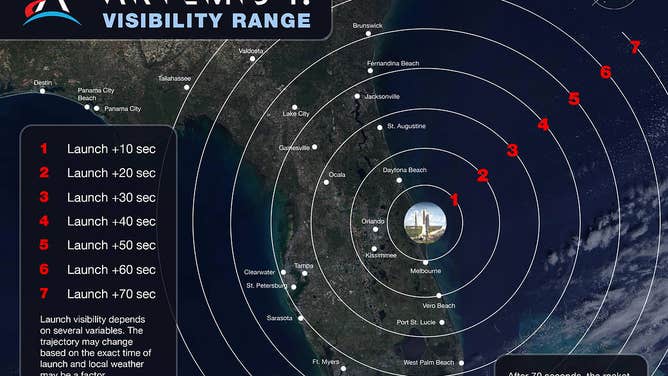
Where the SLS launch will be visible and when after the launch on Nov. 16.
(NASA)
According to the Brevard Emergency Operations Center, popular launch viewing locations at parks in Merritt Island and Titusville were "packed" hours before the launch window opened.
The powerful SLS produced a rumble heard around Florida as it moved away from the peninsula.

